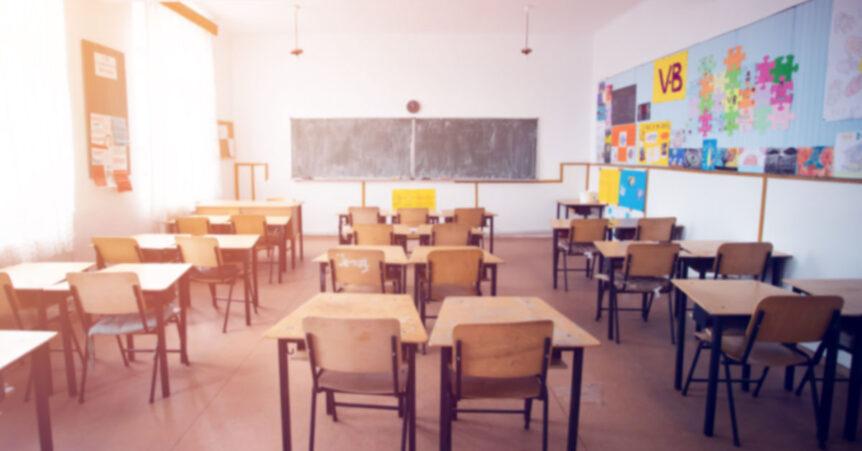Published in NJSBA School Leader – May/June 2020
Authored by: Kerri A. Wright and Elizabeth M. Shea
No doubt the COVID-19 pandemic has raised new and unanticipated challenges for schools across the state and the nation.
The state’s administrators, teachers, and aides find themselves in new and unchartered territory trying to navigate an entirely remote learning environment. Basic educational strategies that assume a face-to-face environment are now unavailable, and teachers are using new technology and products with which they had little, if any, prior experience. To make matters worse, no one in education had much notice about the shift to online learning and everyone remains unsure how long this “new normal” will last. In fact, no one knows when things will be “back to normal”; the only thing we know for sure is that things will look considerably different for a while.
Notably, there is at least one group affected more than others by this uncertainty and lack of opportunity to fully develop and implement plans: members of the disability community and those who support them.
In fact, it has been shown time and again in almost every emergency scenario nationwide, including natural disasters, active shooter events and other crises, that addressing the needs of individuals with disabilities requires a higher level of planning. Often the planning for this group is lacking.
During Hurricane Katrina in 2005, and again during Superstorm Sandy in 2012, individuals with disabilities and medical frailties had difficulty evacuating or getting to a shelter. Many were stranded while awaiting evacuation assistance, confined to their homes, often without electricity, in need of medication, and with little or no ability to communicate with the outside world. Yet, addressing the unique needs of people with disabilities continues to be an afterthought in most emergency planning.
In all likelihood, this is a reflection of the fact that emergency planning for people with disabilities is both complex and time consuming. Given that emergency planning in general is challenging and is often overlooked in the normal course of daily life, it should really be no surprise that it is even less likely that preparations will be in place for a population that is difficult to plan for.
School Safety Planning
The school safety planning front is no different. Typically, any report on school safety best practices includes a mention about the need to incorporate students with disabilities into
the planning. Unfortunately, too often, that “mention” is the end of the discussion. Schools are given little to no guidance about how to actually incorporate the distinctive needs of students with disabilities into safety planning.
Although one in 10 students in the United States has some type of disability, the vast majority of these students will not require specific accommodations related to emergency planning.
However, schools absolutely need to identify the students who require specific accommodations and develop a safety plan to address the students’ specific needs. Identification is the key first step to starting the planning process, but how schools identify which students will require special accommodations in emergency situations and make sure they capture those needs in their overall planning is difficult. While several effective policies exist to ensure safety planning captures the needs of students with disabilities, incorporating a “special needs safety planning tool” (SNSPT”) into the annual IEP (or 504 plan) process for each classified student provides the school with the biggest return on its investment.
Special Needs Safety Planning Tool An SNSPT is a simple tool that outlines how a student’s disabilities may impact him or her in an emergency event and accommodations required to ensure the student’s safety. The SNSPT should include a preliminary meeting with all child study team members, parents and students to evaluate and determine whether any specific planning or accommodations is required for each student due to his or her disabilities related to crisis planning and safety drills. The tool should be user-friendly and easy to incorporate into the current IEP (individualized educational program) process.
It should serve as an extension of what already is occurring in those discussions, and should provide a place to document any special needs the student has related to safety. All child study team members, as well as parents and students, should be trained on the tool so they can inform the discussion. Sample SNSPTs exist for schools to use, but schools should adapt a tool for specific use to make sure all needs are captured in the plan.
A key component of the SNSPT is the discussion about the student’s ability to comprehend the nature of various emergencies, react “appropriately” as needed, the need for access to additional medications or special items to assist in an emergency scenario or lockdown (i.e. sensory objects, headphones, electronic devices, etc., that may be needed to calm or quiet a child during an event), and — perhaps most importantly — how the team is going to work with the student (as needed) to ensure he or she receives useful and effective practice-related to the possible emergency scenarios that may arise.
It also is critically important that schools engage students themselves, as well as their family members, in identifying areas where an accommodation may be required, as well as potential solutions to challenges that are identified during the discussion. It is not uncommon for parents to have an entirely different set of strategies they have developed for use at home to assist their child in a tough situation. No idea should be “off the table” in discussions about how to best accommodate a child during a crisis.
An additional benefit of building SNSPTs into the IEP process is that the annual IEP development process provides a school with a “built-in” system for incorporating disability planning into school safety planning. Because IEPs—by law—must be reviewed and updated on an annual basis, this requirement guarantees an annual review and updating of the SNSPTS related to any safety concerns.
The second step in the SNSPT process is to communicate the information contained in the SNSPT to the school safety personnel charged with the school’s larger emergency response plan. Schools should engage experts to review the plans and ensure they use elements of universal design in all safety planning. All schools are already required to conduct regular drills, and most already do some form of tabletop exercises. Tying what is learned from the SNSPT process into these strategies is essential to ensuring the information is communicated to all parties.
Finally, once a school has identified the special needs of each student, consulted with any necessary experts, and incorporated those needs into their overall schoolwide safety plan, all responsible personnel should be trained on the plan and their role in implementing it. Without this third step, the first two are almost meaningless. Training must be ongoing and updated on a routine basis. Planning with the unique needs of students with disabilities in mind is not easy, nor is it quick. But it is necessary and it is doable. We have all come to a better appreciation over the last two months of the need to plan for what may come at any time. As the air clears and life slowly goes “back to normal,” let’s try not to forget this lesson. Furthermore, let’s apply it to other areas where we have historically been too complacent. Incorporating the needs of students with disabilities in school safety planning is a great place to start.



